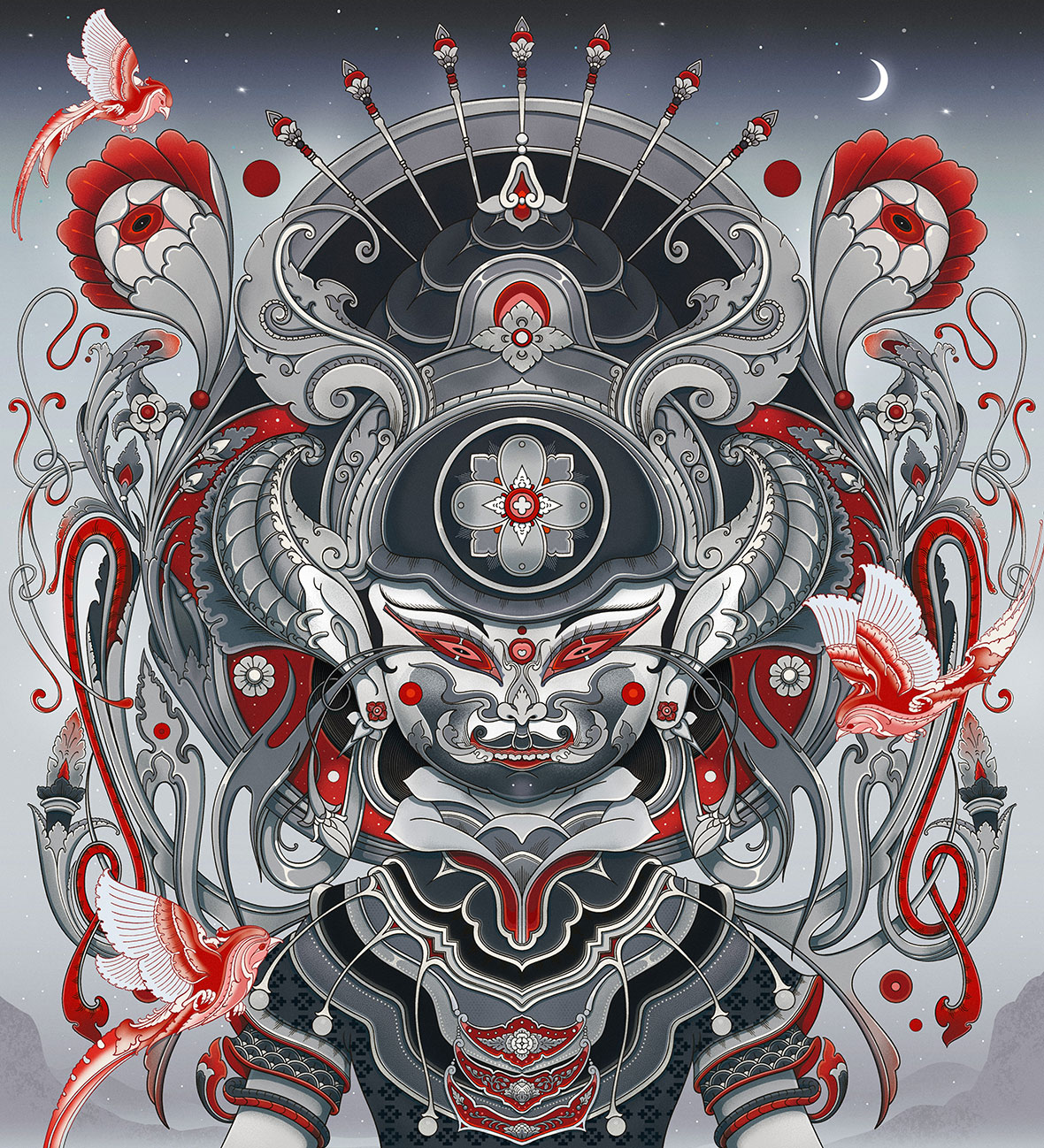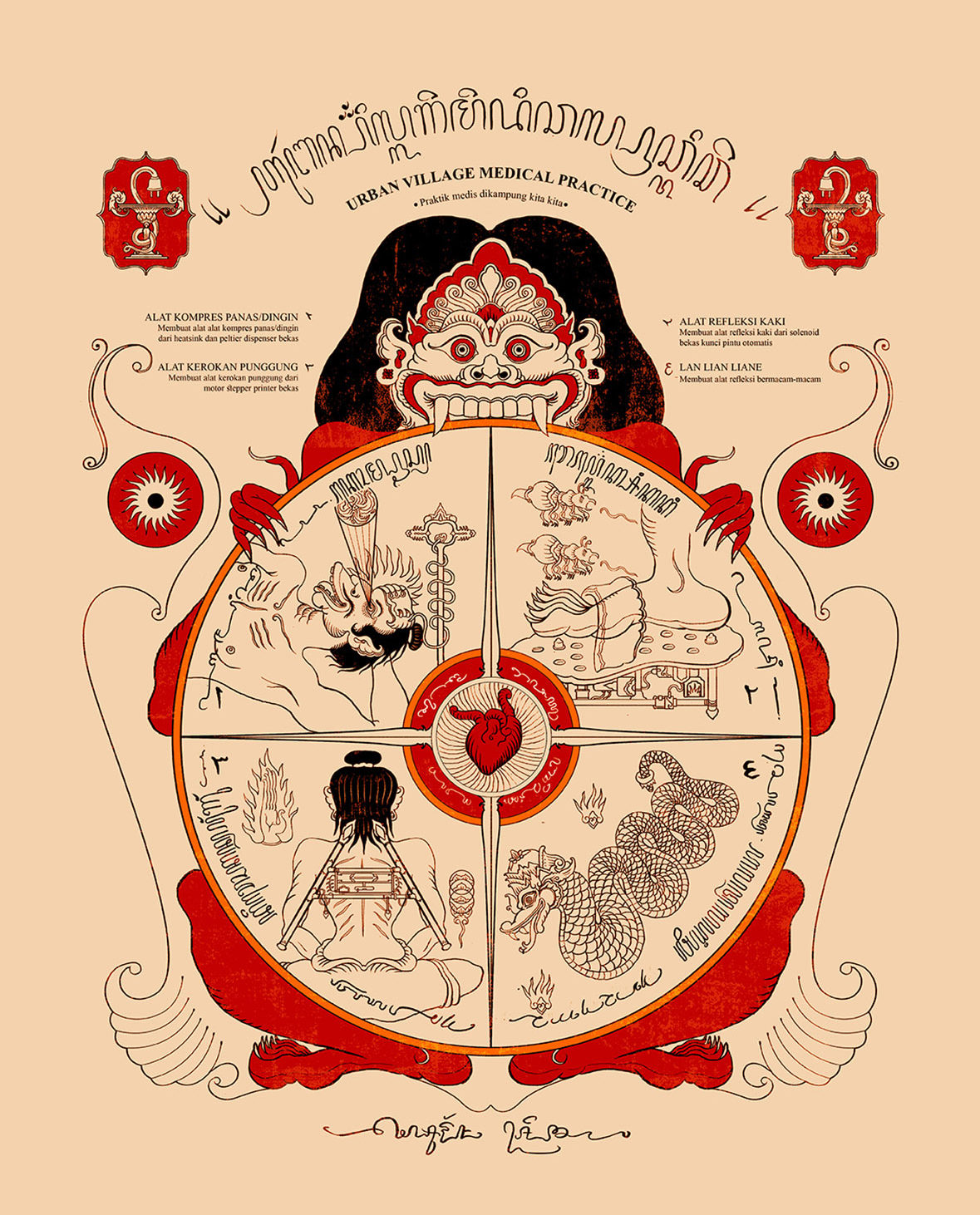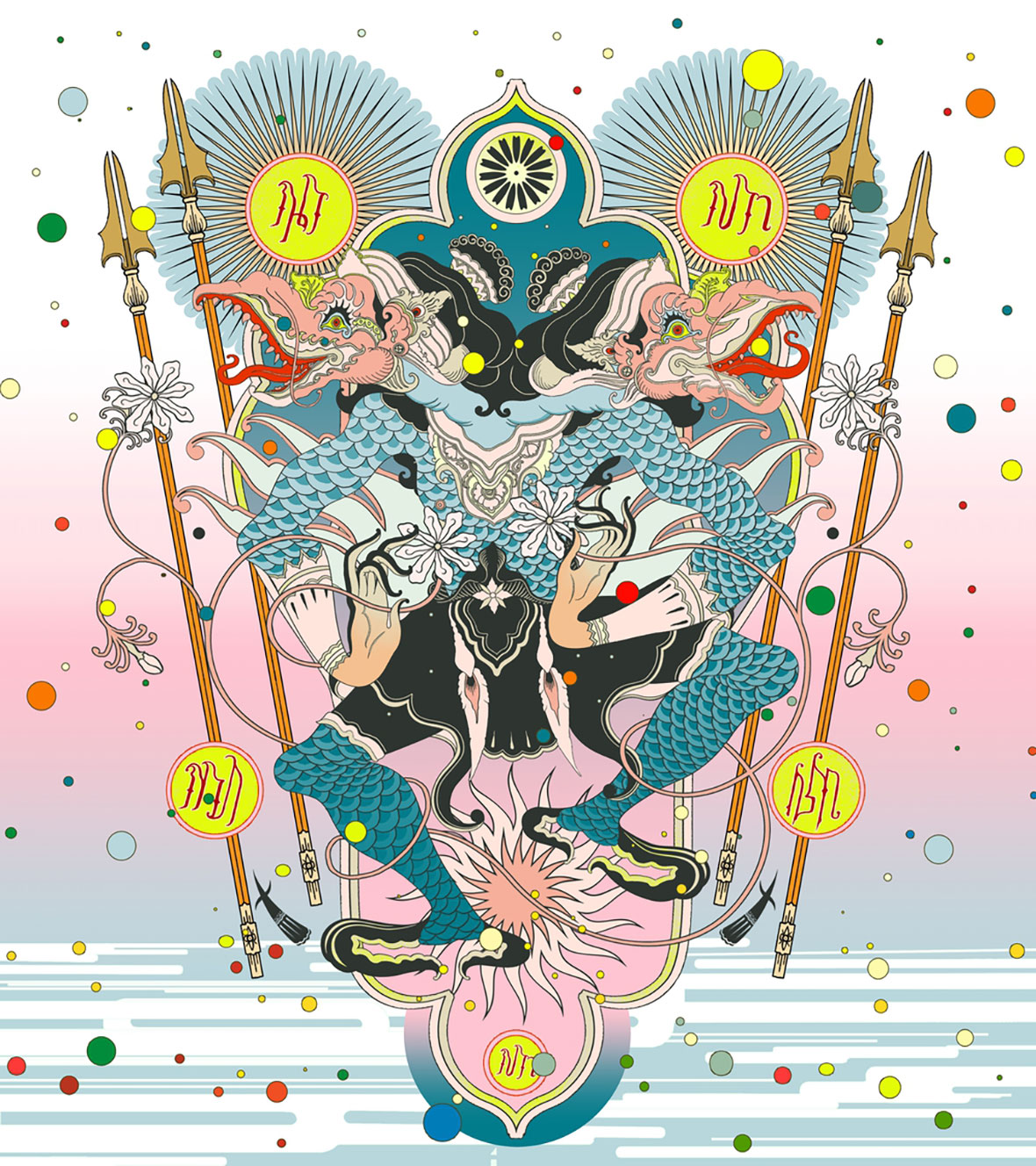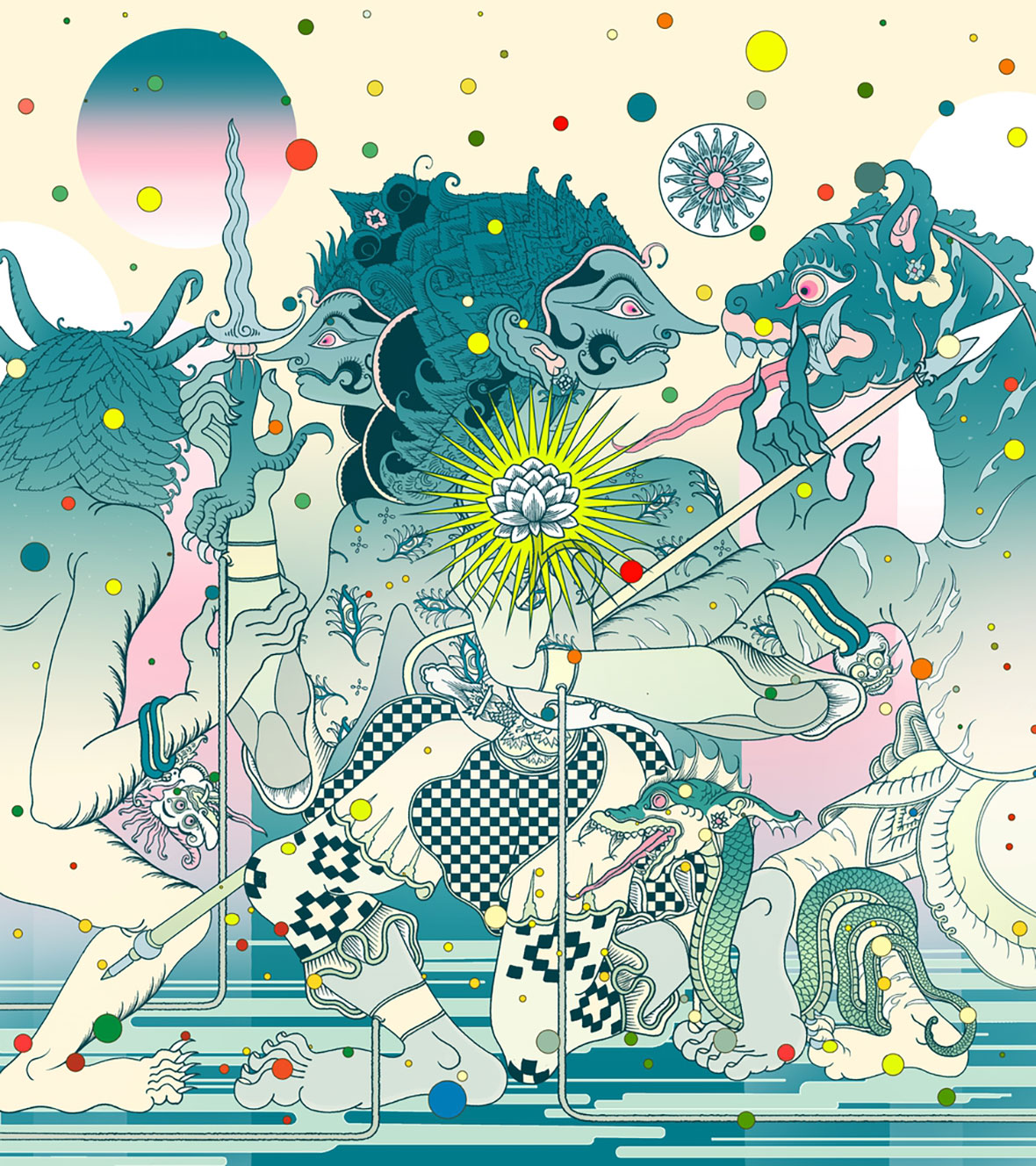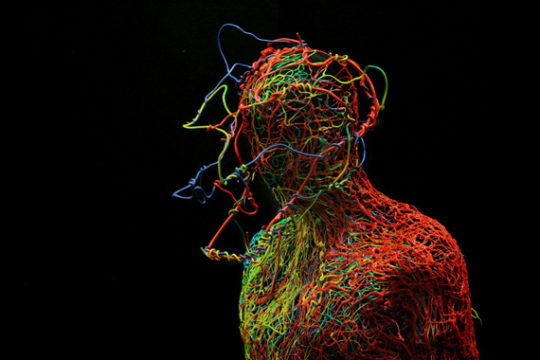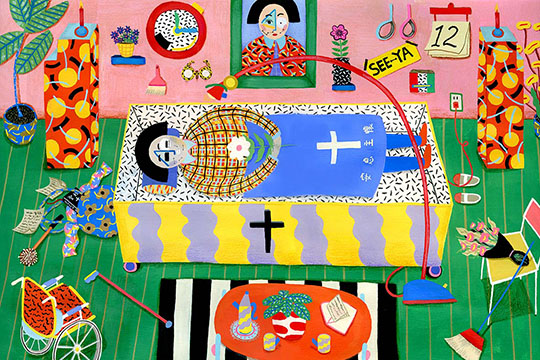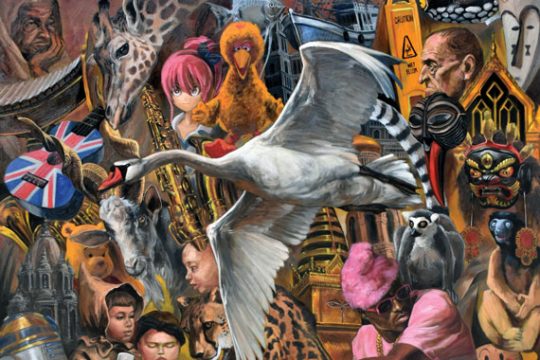
How can ancient, traditional forms of creativity and values be furthered in new contexts with cutting-edge technologies? This is the main focus of Indonesian artist Nalta, who imbues his digital illustrations with a deep connection to local cultures. Anthropomorphic reptiles and deities populate warm canvases with aged textures and archaic texts. Regal, floral patterns and geometric shapes surround the stories, providing frames and backgrounds.
如何借助科技,让古老的传统艺术与时俱进?这是印度尼西亚艺术家 Nalta 在平时创作中最关注的问题。他的数字插画作品往往与当地文化有着千丝万缕的联系。他的画布中,充满了古老艺术的纹路、文字、神灵和拟人动物。宫殿式花卉图案和几何形状,则在作品的四周提供了框架和背景。
Nalta was born and raised in a small village in East Java, Surabaya, where the community remains in close touch with their traditions. He started making digital art in 2011 while studying graphic design at university. Now 30 years old, he says it’s just natural for him to use digital tools because they’re easy to fit into his daily routine. NFTs have accelerated his artistic growth: “It’s in such an early phase and growing so fast. The artists and community encourage me to explore even more. It feels like a new world (or home) to live and learn.” He says he’s concerned about crypto’s environmental impact but unsure how to do anything about it as an individual.
Nalta 在东爪哇省泗水市周边的一个小村庄里长大,那里的社区至今仍保留着厚的传统文化气氛。2011 年他进入大学学习平面设计,并开始尝试数字艺术创作。现年 30 岁的他认为,使用数字工具创作对他来说再自然不过,因为这种创作能轻松地带入到日常生活中。而 NFT 的出现,则加速了他在数字艺术上的见识,他说:“虽是尚处于发展初期的新事物,但其发展迅速,线上的艺术家和社区也激励着我去探索更多,感觉就像一个生活和学习的全新世界。”

His work is heavily influenced by temple reliefs and wayang shadow puppet theater. But he doesn’t limit himself to any one kind of style and looks to the wealth of creative output across Indonesian history for inspiration, always searching for new facets to include in his art. “My pieces don’t represent any specific characters or stories,” Nalta explains. He often describes his style as “Nusantara,” the ancient Javanese term for Southeast Asian seas. “It’s a combination of many different aspects and my personal ideas.” He uses social media, e-books, and old articles archived in digital libraries as sources. “Sometimes, I reach out to people who are more knowledgeable about a concept that I’m exploring.”
他的作品深受寺庙浮雕和印尼皮影戏哇扬戏的影响,但他从不局限于任何一种风格,而是从印尼丰富的创意文化历史中海纳百川,不断发现创作上的新视角、新角度。他经常称自己的风格属于努桑塔拉(Nusantara)风格,努桑塔拉在古代爪哇语中表示东南亚海域。“创作上我借鉴了许多,同时融入我个人的创作意图。”他的许多参考都来自平日的生活和互联网,社交媒体、电子书和数字图书馆存档的旧文章等等,“有时候,我也会请教某领域的专家来进一步巩固作品的故事性。”

“There’s so much beautiful ornamentation in traditional culture,” Nalta says. “It has so much uniqueness and takes so many different forms. I’m endlessly curious about it and love to develop it in new ways.” More than just an aesthetic, he says that it promotes inclusiveness. “Tolerance and a spirit of understanding each other are big aspects of ethnic Indonesian art.”
“传统文化里其实有很多绝美的装饰和设计,”Nalta 说,“它们独一无二,呈现出丰富的形式,往往令我神往,并希望以自己的方式对其进行创新。”在他看来,这不仅仅是一种美学,也有助促进包容性,“宽容和相互理解的精神是印尼民族艺术的重要体现之一。”
Recently, Nalta has started using broader color pallets and finer shading techniques. Soft gradients and bold tones are replacing his vintage leanings, and characters with futuristic touches are now more common. But they’re still dripping with traditional clothing and accessories while batik patterns are woven throughout everything. “I’ve been asking myself, ‘How can I make both traditional and modern accents get along in harmony?’ One of the answers I’ve settled on is through color.”
最近,Nalta 开始在创作中使用更丰富的配色与更精细的着色技巧,复古风格逐渐被柔和、渐变和大胆的色调取而代之,画中的角色散发着未来主义的气息,但仍然身穿传统服饰,印尼“batik”蜡染图案随处可见,“我一直在思考,如何才能让传统和现代融合为一?对于这个问题,我的答案之一是颜色。”
Like our stories? Follow us on Facebook and Instagram.
Instagram: @nalta097
Contributor: Mike Steyels
Chinese Translation: Olivia Li


